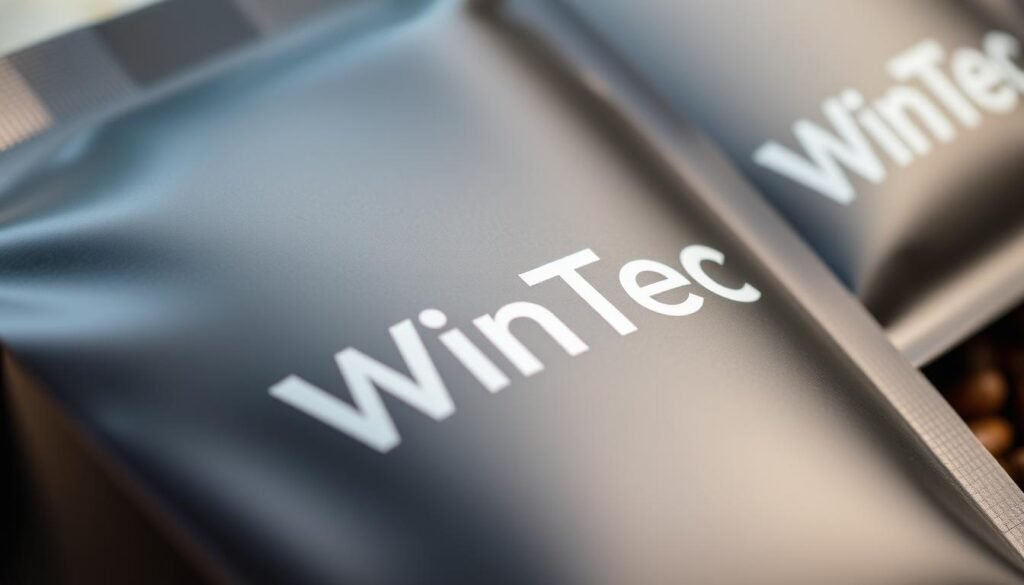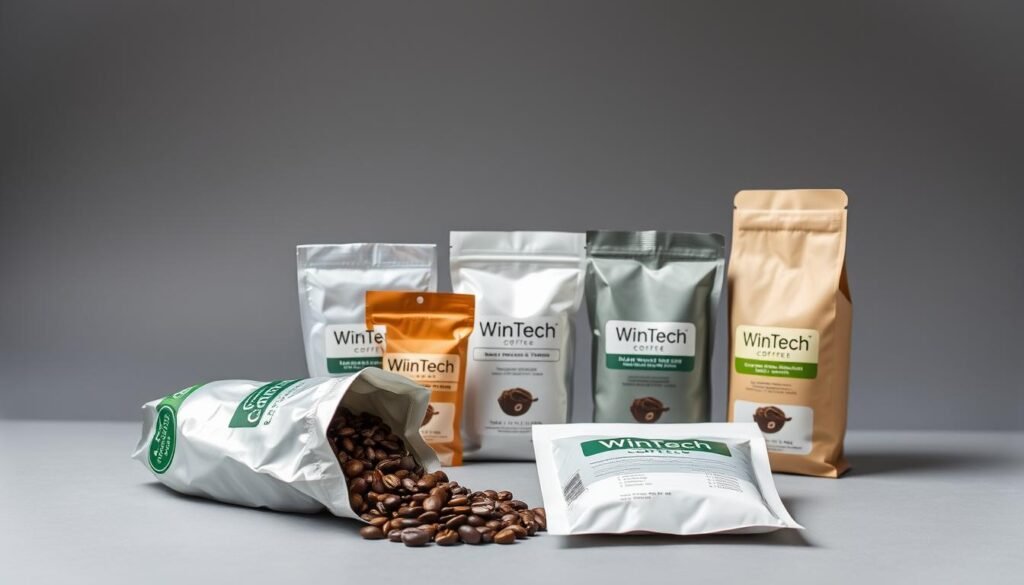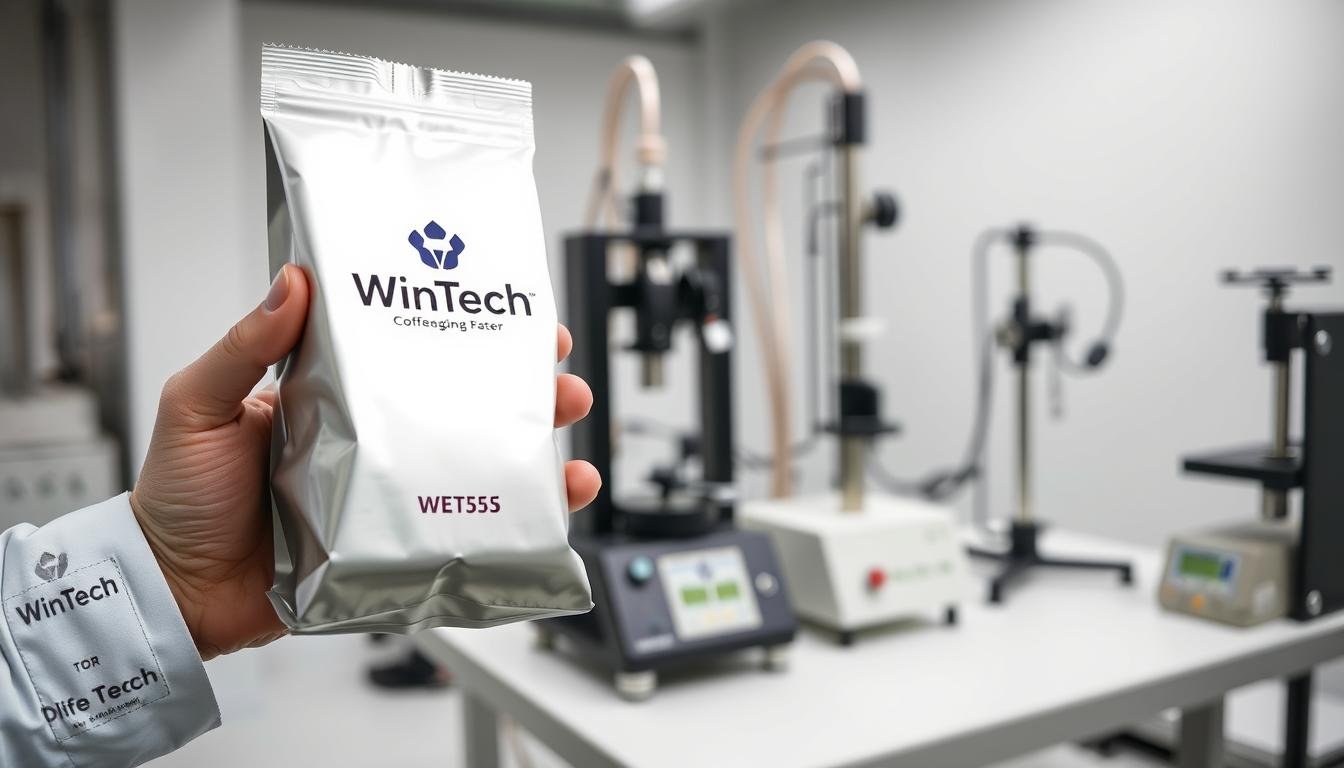Have you ever wondered what keeps your coffee beans fresh from roaster to cup? The secret lies in advanced Wintech packaging of coffee beans that goes far beyond a simple bag.
Packaging of coffee beans represents a critical scientific process where every detail matters. Wintech Package understands that coffee bean storage solutions require precision engineering to protect delicate flavors and prevent oxidation. Freshness preservation bags are not just containers but sophisticated barriers designed to maintain coffee’s complex sensory profile.
Rigorous barrier property testing ensures that your coffee remains as vibrant and aromatic as the moment it was roasted. By controlling oxygen, moisture, and light exposure, specialized packaging of coffee beans protects the intricate chemistry of coffee beans during transportation and storage.
Key Takeaways
- Barrier testing is crucial for maintaining coffee bean quality
- Specialized packaging prevents flavor degradation
- Oxygen and moisture control are essential for freshness
- Advanced materials protect coffee’s sensory characteristics
- Scientific approach determines packaging effectiveness
Importance of Barrier Properties in Packaging of Coffee Beans
Protecting the delicate flavors of coffee requires more than just a simple container. Airtight coffee containers play a crucial role in preserving the quality and taste of your favorite brew. Understanding the science behind packaging of coffee beans can help you appreciate the complexity of keeping coffee fresh from roaster to cup.

Coffee is a sensitive product that demands exceptional protection. After roasting, beans continue to release carbon dioxide, which creates unique challenges for vacuum sealed coffee packaging. The right packaging must balance multiple critical factors to maintain optimal freshness.
Understanding Moisture and Oxygen Control
Moisture and oxygen are the primary enemies of coffee quality. Exposure to these elements can quickly degrade your coffee’s flavor profile. Specialty coffee packaging uses advanced barrier technologies to prevent:
- Oxidation that dulls flavor
- Moisture absorption that creates staleness
- Rapid flavor degradation
Light Protection Strategies
Sunlight and artificial light can dramatically impact coffee quality. UV rays break down delicate coffee compounds, leading to rapid flavor deterioration. Professional packaging incorporates light-blocking materials to shield your beans from these harmful rays.
Material Selection Criteria
| Packaging Property | Ideal Performance | Impact on Coffee Quality |
|---|---|---|
| Oxygen Transmission Rate | Near Zero | Prevents flavor oxidation |
| Moisture Barrier | Completely Sealed | Maintains bean integrity |
| Light Protection | Opaque Material | Preserves aromatic compounds |
When selecting packaging for your coffee, look for materials that provide comprehensive protection. The right container can mean the difference between a mediocre and an exceptional coffee experience.
Different Types of Materials Used in Packaging of Coffee Beans
Selecting the right packaging material is crucial for preserving coffee’s quality and extending its shelf life. Coffee packaging involves sophisticated material choices that protect beans from external factors while maintaining their unique flavor profile.

The packaging landscape for coffee beans encompasses various materials, each with distinct characteristics that impact coffee preservation. Understanding these materials helps coffee manufacturers and consumers make informed decisions about product quality.
Comparing Plastic vs. Paper Packaging
Plastic and paper packaging offer different protective qualities for coffee beans. While plastic provides excellent barrier properties, paper packaging presents sustainable alternatives.
- Plastic packaging:
- Superior oxygen barrier
- Moisture resistance
- Lightweight design
- Paper packaging:
- Eco-friendly materials
- Biodegradable options
- Renewable resources
Benefits of Metallic Foil in Coffee Packaging
Metallic foil layers play a critical role in creating robust oxygen barriers for nitrogen-flushed coffee. These layers effectively block external contaminants, preserving coffee’s delicate aromatic compounds.
| Material | Oxygen Barrier | Moisture Protection | Cost Efficiency |
|---|---|---|---|
| Aluminum Foil | Excellent | High | Medium |
| Multi-layer Laminate | Very Good | Medium-High | Low |
Sustainable Coffee Packaging Solutions
The coffee industry increasingly focuses on sustainable packaging options. Modern manufacturers integrate coffee degassing valves into eco-friendly materials, ensuring product quality while reducing environmental impact.
- Recyclable packaging materials
- Biodegradable film layers
- Compostable packaging solutions
Innovative packaging techniques like nitrogen-flushed coffee packaging represent the future of sustainable coffee preservation, balancing product quality with environmental responsibility.
Testing Methods for Packaging of Coffee Beans
When selecting packaging for coffee beans, rigorous testing determines material performance and quality. Your coffee’s freshness depends on comprehensive barrier property evaluations that assess oxygen and moisture protection. Advanced testing protocols help manufacturers validate packaging materials, ensuring your coffee remains flavorful from production to consumption.
Quality control processes involve multiple specialized tests designed to simulate real-world packaging conditions. Leak detection, headspace analysis, and shipping stress tests provide critical insights into material durability. Oxygen transmission rate (OTR) and water vapor transmission rate (WVTR) examinations reveal how effectively biodegradable coffee bags protect against environmental degradation factors.
Standard Tests for Barrier Properties
Manufacturers like Wintech Package implement stringent testing standards to validate packaging performance. These assessments include permeability measurements, CO2 transmission evaluations, and accelerated shelf life studies. Specialized techniques help determine whether biodegradable coffee bags meet industry requirements for preserving coffee bean quality and extending product shelf life.
Innovations in Testing for Packaging
Modern testing approaches now integrate advanced technological solutions to assess packaging integrity. Emerging techniques allow precise measurement of barrier properties in sustainable packaging materials. Your coffee packaging must meet FDA regulations while maintaining environmental sustainability, making innovative testing methods crucial for developing high-performance biodegradable coffee bags.
Ensuring Compliance with Industry Standards
Compliance with established industry standards remains paramount in packaging development. Rigorous testing protocols validate material performance, protecting consumer expectations and product quality. By implementing comprehensive evaluation methods, manufacturers ensure that biodegradable coffee bags deliver optimal protection for your favorite coffee beans.

